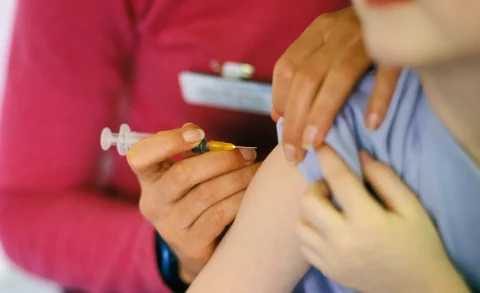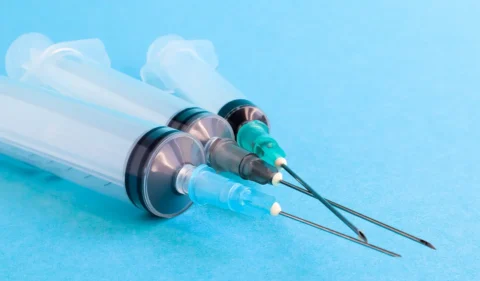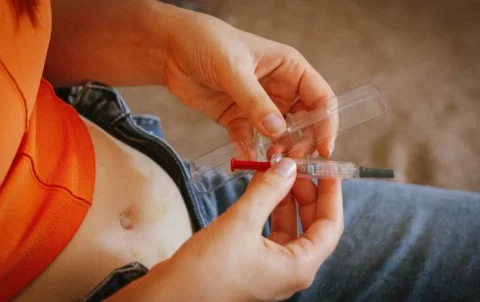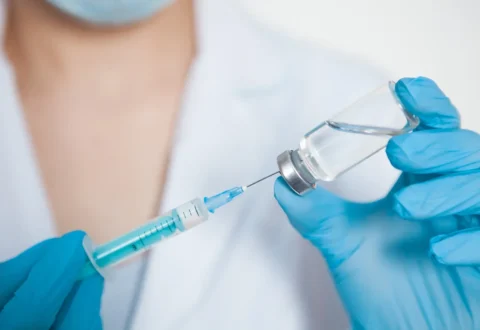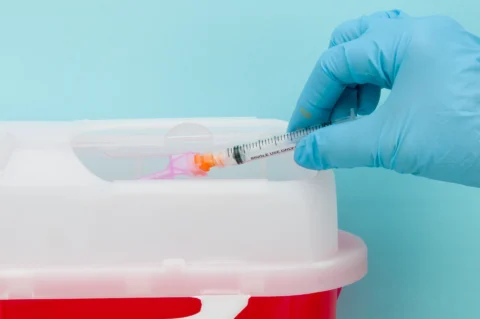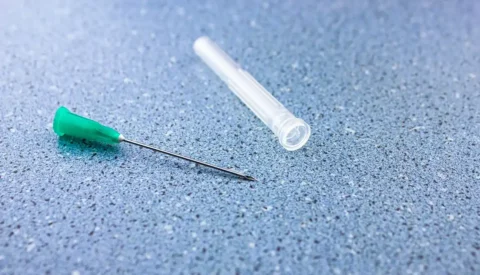The Science Behind the Most Common Medical Tool: Hypodermic Needles Explained
A hypodermic needle is something many of us have encountered at some point in our lives, whether it’s for vaccinations, drawing blood samples or administering medications. Its crucial role in healthcare can’t be overstated; however, not everyone knows what exactly a hypodermic needle is and how it works.
In this article, we’re going to explore the history of hypodermic needles, their various types and sizes, as well as the materials used in manufacturing them.
History And Evolution Of Medical Needles
The history of medical needles can be traced back to the use of ancient sutures, where sharpened bones or metal spikes were employed for stitching wounds closed. The development and design of these early instruments provided a foundation for subsequent advancements in needle technology.
With time, the need for more refined medical tools became apparent, particularly as our understanding of disease transmission and infection control grew. This led to further innovation in this field, such as the introduction of hollow hypodermic needles that facilitated subcutaneous injections.
Through trial and error, physicians gradually improved upon earlier prototypes by refining materials used and honing manufacturing techniques. Today’s hypodermic needles are far removed from their primitive predecessors – they now feature ultra-thin walls, precise engineering standards, and advanced sterilization methods that ensure optimal patient outcomes while minimizing discomfort during administration.
Different Types And Sizes Of Needles
Delving further into the intriguing realm of hypodermic needles, one must understand that there exists a variety of types and sizes to cater to different medical applications. The choice of needle is crucial in ensuring optimal patient comfort and accurate administration of medications or extraction of fluids. Several factors influence this decision-making process, including aspects such as needle gauge comparison and syringe selection tips.
To better comprehend the vast array of options available, consider the following key points:
- Needle Gauge: This refers to the diameter (or thickness) of the needle’s shaft. A higher gauge number represents a thinner needle, while a lower number indicates a thicker needle. For instance, an insulin injection typically employs a 31-gauge needle for its smaller diameter which minimizes discomfort.
- Length: Needle length varies according to purpose and target tissue depth. For example, intramuscular injections necessitate longer needles capable of penetrating deep muscle layers, while subcutaneous injections require relatively shorter ones.
- Type: Various kinds exist based on their specific functions; some examples include safety-engineered needles designed to prevent accidental injuries and auto-disable devices intended for single-use only.
- Syringe Compatibility: Ensuring compatibility between your chosen needle and syringe is essential to maintain accurate dosing and minimize leakage during use.
In selecting an appropriate hypodermic needle size and type, it is vital for healthcare professionals to take into account factors such as patient age, body mass index (BMI), medication viscosity, and desired route of administration.
With proper knowledge on these considerations alongside relevant information like needle gauge comparisons and syringe selection tips at hand, clinicians can make well-informed decisions that prioritize both efficacy and patient welfare throughout various medical procedures involving hypodermic needles, ultimately improving the overall success of treatments and enhancing patient satisfaction and comfort.
Types of Hypodermic Needles
The standard hypodermic needle is a common rounded-tip needle used for intramuscular injections and subcutaneous injections. Sizes range from 18 to 36 gauge, with lower gauges indicating thicker needles. Standard needles are versatile and used to deliver a wide range of medications or fluids.
Insulin needles are fine, ultra-sharp needles designed specifically for injecting insulin. They are 29 gauge or finer to minimize discomfort from injections. The small size and precision tip allow for safer insulin delivery with less tissue damage.
Intravenous (IV) therapy needles access veins and administer IV fluids, medications, blood or blood products. They have a tapered tip to facilitate venous access while thickness provides durability for multiple IV insertions. IV needles come in smaller gauges, often 20 to 24 gauge, for increased flexibility and reduced blood reflux.
Blunt needles have a rounded tip that does not penetrate the skin. They are used for blood drawing, establishing an intravenous line, or accessing ports. The dull tip eliminates the risk of accidental sticks from an exposed needle point. Blunt needles come in a range of gauges based on intended use.
Hydra needles, or hydraulic needles, expand at the tip for controlled tissue dissection before collecting fluid samples or cell biopsies. When fluid is injected into the needle, the tip hydraulically expands to minimize damage, then seals around the internal diameter upon retraction to suction samples into the needle. Hydra needles cause less trauma for improved sample quality and fewer complications.
Other less common types include spinal needles for lumbar punctures, epidural needles for administering epidural anesthesia, and catheter needles for placing intravenous catheters. The needle is selected based on factors such as gauge, length, tip configuration, material, indication for use, and level of invasiveness required.
Materials And Manufacturing Process of Hypodermic Needles
Materials used to manufacture hypodermic needles include stainless steel, plastic, and rubber.
The manufacturing process involves cutting, shaping, and grinding the metal to the desired size and shape.
Rubber is molded to fit the metal, and plastic is used to create the barrel and plunger. Finally, the needle is sterilized to ensure safety before it’s used.
Materials Used
Did you know that the materials used in hypodermic needles play a crucial role in infection prevention?
This ensures that the needle remains sterile during use and minimizes needle disposal-related risks.
The choice of material for the manufacturing process is vital to ensure smooth insertion into tissues while minimizing discomfort to patients.
The outer surface of the needle receives careful attention with an electro-polished finish, reducing friction and preventing tissue damage during injection.
Some manufacturers apply coatings like silicone or micro polymers on their needles, enhancing patient comfort and further promoting safe usage practices.
By selecting appropriate materials and incorporating advanced manufacturing techniques, healthcare providers can rely on these essential tools to deliver life-saving medications effectively while keeping both patients and practitioners safe from potential infections.
Manufacturing Process
Having explored the importance of materials in hypodermic needles, it’s essential to consider the manufacturing process that ensures their sterility and performance.
The needle production involves a series of intricate steps, including drawing, grinding, and electro-polishing stainless steel components. Throughout these processes, stringent quality control measures are employed to guarantee consistent needle sharpness and optimal functionality.
One crucial aspect of this manufacturing process is needle sterilization before packaging for distribution. Various techniques like steam sterilization or radiation may be utilized depending on the manufacturer’s preferences and industry standards. This step helps ensure that healthcare professionals receive and use sterile equipment during medical procedures, reducing infection risks significantly.
Furthermore, proper disposal methods such as sharps containers must be implemented by practitioners following safe usage practices to prevent accidental injuries or potential contamination from used needles. By maintaining high-quality manufacturing standards coupled with appropriate sterilization and disposal protocols, patient safety remains at the forefront throughout every stage of hypodermic needle production and utilization.
THE PERFECT NEEDLES FOR YOUR PATIENTS. CODE “20OFF” FOR 20% OFF YOUR FIRST ORDER!
FACE Med Store supplies countless doctors and clinics with all their supplies, including top-of-the-line hypodermic needles. Get your hypodermic needles at 20% off today!
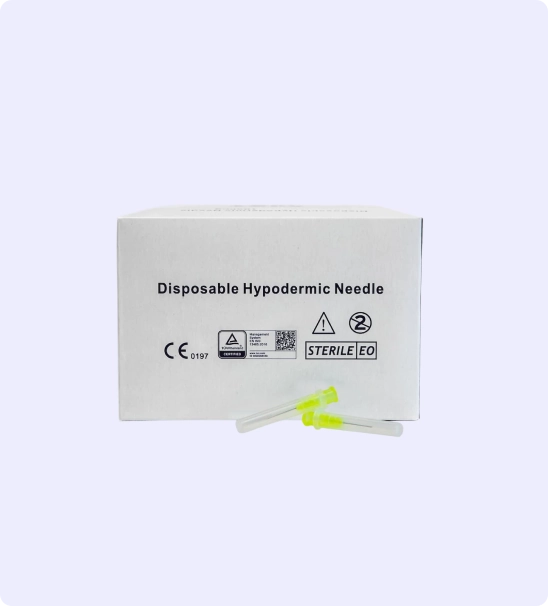
Hypodermic Needles: Proper Usage Techniques For Patient Safety
Having discussed the materials and manufacturing process of hypodermic needles, it is essential to understand how these devices should be used correctly to ensure patient safety.
Proper usage techniques for hypodermic needles are crucial in maintaining a sterile environment and reducing the risk of complications such as infection or injury during medical procedures.
One critical aspect of proper needle usage involves appropriate needle disposal practices. Healthcare professionals must adhere to established guidelines for disposing of used needles promptly and securely after each use, which may include placing them into designated sharps containers.
This proactive approach can significantly reduce the likelihood of accidental needlestick injuries and cross-contamination among patients while promoting overall infection prevention within healthcare settings.
Practitioners must be diligent about hand hygiene before and after handling hypodermic needles, as well as utilizing personal protective equipment when necessary to protect themselves from potential exposure to bloodborne pathogens.
By adhering to these best practices, healthcare providers can minimize risks associated with improper needle handling and contribute to improved patient outcomes.
FAQ: What is a Hypodermic Needle?
Q: What are the different types of needles available for medical use?
A: There is a range of sizes and types of needles available for various medical purposes, including hypodermic syringes, intradermal injection needles, and intravenous injection needles. Some are designed as reusable needles, while others are disposable needles to ensure safety and sterility.
Q: How has the design of hypodermic needles evolved over time?
A: The evolution of hypodermic needles began with hollow tubes and goose quills used by an Irish doctor in the 19th century. The modern syringe now features a hollow needle attached to a syringe barrel, allowing for precise administration of medications and other substances.
Q: What is the difference between a disposable plastic syringe and a reusable one?
A: Disposable syringes are single-use devices that come pre-sterilized and are discarded after use, reducing the risk of infection and contamination. Reusable needles require proper sterilization between uses and are often made of more durable materials like stainless steel or glass.
Q: How do adaptable safety needles help reduce the phobia of needles?
A: Adaptable safety needles are designed with features such as retractable or shielded tips, aiming to minimize pain and anxiety associated with injections. These innovative designs can help alleviate the phobia of needles for patients who require frequent injections.
Q: Are there specific guidelines for selecting the right size and type of hypodermic needle?
A: Yes, medical professionals choose the appropriate size and type of hypodermic needle based on factors such as the patient’s age, the injection site, and the viscosity of the medication being administered. Needles are available in a wide range of sizes to accommodate various medical use scenarios.
Q: How do I safely dispose of used hypodermic needles and disposable syringes?
A: Proper disposal of used needles is essential for preventing injuries and the spread of infections. Used needles should be placed in an approved sharps container, which is puncture-resistant and leak-proof. Once full, the container must be sealed and disposed of according to local regulations.
Conclusion
It’s essential to understand the history and evolution of hypodermic needles as they’ve played a significant role in modern medicine.
The various types, sizes, materials, and manufacturing processes ensure that medical professionals can cater to their patients’ needs effectively.
By being knowledgeable about hypodermic needles, we contribute to better healthcare outcomes for everyone involved.
Discover the power of Hydra Needles at Face Med Shop, your one-stop destination for premium skincare solutions.
